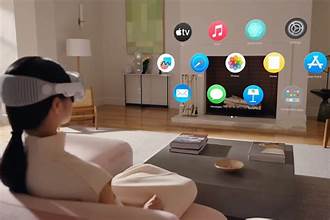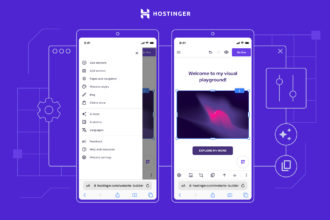Introduction to Mixed Reality and Spatial Computing
Imagine stepping into a world where digital and physical realities intertwine seamlessly. Welcome to the era of mixed reality, a realm that is reshaping how we interact with technology, work collaboratively, and enjoy leisure activities. As we approach 2025, innovations are accelerating at an unprecedented pace. At the forefront is Apple’s Vision Pro—a groundbreaking device poised to redefine spatial computing.
This isn’t just about gadgets; it’s about transforming our everyday experiences. Mixed reality opens up new avenues for creativity and productivity while enhancing social connections like never before. As we dive deeper into this fascinating landscape, we’ll explore how Apple’s latest innovation is leading us into uncharted territories of interaction and immersion in both personal and professional realms. Buckle up—this journey promises to be exhilarating!
The Evolution of Mixed Reality Technology
Mixed reality technology has come a long way since its inception. Early systems relied heavily on cumbersome hardware and limited functionality, often only scratching the surface of what was possible.
As computing power increased, so did the potential for mixed reality experiences. The introduction of lightweight headsets made it more accessible to everyday users. Now, augmented elements seamlessly integrate with our physical environments.
Software advancements have also played a crucial role. Sophisticated algorithms enhance tracking accuracy and improve user interactivity. Developers are finding innovative ways to merge the digital and real worlds effectively.
Companies like Apple are now leading this evolution with devices such as Vision Pro, which push boundaries further than ever before. Enhanced graphics and immersive audio create richer experiences that engage multiple senses simultaneously.
This rapid growth indicates an exciting future where mixed reality could redefine how we experience everything from entertainment to education.
Apple Vision Pro: The Future of Mixed Reality?
The Apple Vision Pro is setting the stage for a new era in mixed reality. With its sleek design and powerful capabilities, it offers an immersive experience that blends digital elements seamlessly with the physical world.
Its advanced sensors and high-resolution displays create lifelike visuals. Users can interact with 3D objects as if they are right in front of them. This level of engagement promises to redefine how we perceive technology.
Moreover, Apple’s focus on user-friendly interfaces ensures accessibility for everyone. Whether you’re gaming, working, or socializing, interaction feels natural and intuitive.
Apps designed specifically for this platform showcase its versatility. From virtual meetings to interactive learning experiences, the potential seems boundless.
As developers explore these possibilities, the question remains: How will society adapt to this new dimension of computing? The answers may very well shape our future interactions and workflows.
How Apple Vision Pro is Transforming Industries
Apple Vision Pro is reshaping industries in ways we once only dreamed of. With its advanced mixed reality capabilities, businesses are discovering innovative approaches to problem-solving and collaboration.
In healthcare, surgeons can visualize complex procedures with overlays that enhance precision. Training programs use immersive simulations, making learning more effective than traditional methods.
The retail sector has embraced this technology too. Customers can virtually try on products through augmented realities, reducing return rates while boosting customer satisfaction.
Architecture and design benefit from the ability to create 3D models viewed in real space. This visualization fosters better communication among teams and clients alike.
Education is also experiencing a renaissance as classrooms become interactive environments where students explore concepts firsthand. Apple Vision Pro makes abstract ideas tangible and engaging for learners of all ages.
These transformations illustrate how spatial computing from Apple isn’t just a trend; it’s redefining how industries operate daily.
The Impact on Work, Play, and Connection in 2025
In 2025, the Apple Vision Pro is poised to reshape our daily lives in profound ways. Work environments will transform into immersive spaces where colleagues connect seamlessly through mixed reality. Virtual meetings could feel like face-to-face interactions, with participants appearing as lifelike avatars.
Entertainment will also take a leap forward. Imagine playing games where you step directly into the action. With enhanced visuals and interactive elements, gaming becomes an experience that transcends the screen.
Social connections will evolve too. Friends can gather online in shared virtual spaces, regardless of physical distance. Events ranging from concerts to family gatherings can occur in breathtaking digital arenas.
This new era of spatial computing enhances creativity and collaboration across all aspects of life while fostering deeper connections among users like never before. The blend between work and play creates a fluid lifestyle that many are eager to embrace.
Challenges and Limitations of Mixed Reality
Despite its promising potential, mixed reality faces several challenges. One primary concern is user comfort. Long periods of use can lead to physical discomfort or fatigue due to heavy headsets and immersive environments.
Another significant limitation lies in the technology itself. Current devices often struggle with latency issues that disrupt seamless interactions. This can hinder productivity, especially in professional settings where accuracy is critical.
Additionally, content availability poses a problem. While some applications flourish, many industries lack comprehensive solutions tailored for specific needs or workflows.
Privacy concerns also loom large as data collection becomes widespread within these platforms. Users may hesitate to fully engage when their personal information could be at stake.
The high cost of advanced hardware makes it less accessible for many users and businesses alike, slowing adoption rates across various sectors.
Looking Ahead: What’s Next for Mixed Reality?
The future of mixed reality is filled with immense potential. As technology evolves, we can expect an even deeper convergence between the digital and physical worlds. Companies are pouring resources into research and development to push boundaries further than ever before.
Apple’s Vision Pro is just the start. With advancements in hardware and software, new applications will emerge regularly—each more immersive than the last. We might see seamless integration into our daily lives, from virtual offices that enhance productivity to interactive gaming experiences that blur real-world boundaries.
Education could also undergo a transformation as mixed reality allows for experiential learning in ways never thought possible. Imagine students exploring ancient civilizations or conducting scientific experiments right within their classrooms—or living rooms!
Yet challenges remain on the horizon. Issues such as privacy concerns, accessibility, and user comfort will need addressing if widespread adoption is to occur. The conversation around these topics will shape how society embraces this technology moving forward.
As we look ahead to 2025 and beyond, it’s clear that spatial computing holds a promising place in our future landscape — one where work, play, and connection become increasingly intertwined through innovative technological solutions like Apple’s Vision Pro.










